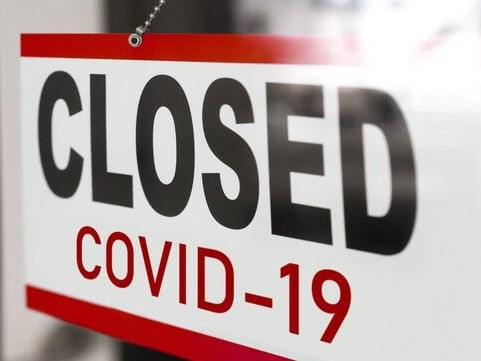By Lata Tauro
When the first human fell to a newly mutated Corona Virus aka COVID-19, in Wuhan, China, around November / December last year, the universe shifted on its axis. Or alternately, we entered a portal to a different universe. The reverberations of that innocuous event have been felt around the globe, from Italy to the United States and beyond.
We now live in a world where our accumulated wealth and knowledge is insufficient protection from the terrible danger this contagious and potentially fatal, microscopic enemy poses. Every assurance that we took for granted a few months ago is gone, and the one thing that we are now certain of is uncertainty.
In India we have even more challenges than the rest of the world. The terrible economic reverses we suffered under the Modi regime in the last 6 years due to demonetisation and a badly implemented GST, have already left our economy stricken, with a grossly diminished GDP growth rate of around 4.5%. And all these reverses have left us with depleted reserves.
The Modi government is out of its element when it comes to addressing a pandemic. Instead the PM, as expected, uses even this situation of great physical threat to shore up on PR for himself. He calls upon citizens to take part in superficial antics rather than holding reassuring press briefings, which are the need of the hour.
Unable to grasp the enormity of the challenge before us, he allowed two precious months to elapse before even acknowledging that this virus posed a threat. All this in spite of warnings from opposition leaders, prominent among them being Rahul Gandhi who made the first one in on 12th February, with repeated warnings later in the month. Rahul Gandhi might as well have not spoken at all for all the effect it had on the PM. Instead, our PM went ahead with his plans for a huge ‘Howdy Trump’ event, even as Delhi was rocked by a vicious pogrom against Muslims and yet he remained silent and unconcerned, continuing with the event unperturbed.
More warnings followed, yet he went on to blithely destabilise a democratically elected government in Madhya Pradesh, getting a BJP government sworn in there before he finally acknowledged late in March that we indeed had a problem…
…and then went on to announce a sudden 3 week lockdown at 8 pm at night, with just 4 hours of the late evening left for citizens to prepare.
He gave no instructions or details of the shape of the lockdown or if essential services would be exempt or not. Whether any kind of transport would be available, for those services. Nothing. Just a bare faced pronouncement, for maximum effect, the more terrifying the better.
There seemed to be no thought for how this would affect the thousands of daily wage labourers across India’s cities, who would be left high and dry, with no wages and as a consequence neither shelter nor food.
With this one heartless, unplanned announcement he set in motion a great exodus. Poor, young labourers of India’s cities, trudged thousands of miles on foot back to their villages. If nothing else, they knew that even if death was imminent, it would happen in the midst of their own.
So instead of a successful lockdown, what India saw was thousands of these labourers on the streets, desperate to get back home. And being mercilessly thrashed by unsensitised police, who harassed and hounded these already beleaguered and distraught citizens. The PM’s unplanned announcement thus added a new and unique dimension to India’s fight against the virus.
In addition, where other countries equipped medical staff in terms of personal protective gear to guard against the virus while treating infected patients, in India they have been left abysmally under equipped and vulnerable and had to petition the Supreme Court to make the government provide them with the same. This is a serious lacuna, as this is our frontline against this enemy. To not adequately equip and protect them is to be doubly vulnerable. Losing a member of medical staff is not just the death of one individual, but the loss of the most precious resource at a time like this.
India’s virus infection trajectory is beginning to show the expected surge, though our numbers might still seem less alarming than what countries like China, Italy and Spain have seen. On the 15th day of a 21-day lockdown the case count continued to mount. India’s case count was roughly double of what it was on the 11th day, just four days before.
On the 10th of April, India reported its deadliest day since the outbreak, as infections crossed 6,700. In 24 hours, there were 37 deaths related to the novel coronavirus, according to the health ministry’s website. That was the highest number of fatalities recorded in a single day in India, taking the total Covid-19 cases to 6,761, and the death toll to 206.
Meanwhile, what this is doing to an already faltering economy, is the most distressing part. It leaves India vulnerable to nearly as many deaths from loss of jobs and income resulting in poverty and starvation, as from infections. We are left in a dilemma whether to safeguard against the virus by prolonging the lockdown, which will lead to a further economic meltdown. Or to lift the lockdown and prevent further economic collapse at the risk of the pandemic surging through the population.
it is a nightmarish choice. We are in uncharted territory with no road map to guide us. The smallest errors will have terrible consequences. While we can learn from the ongoing experience of other countries, our own distinctive conditions make our situation even more difficult.
What we cannot afford at this time is social unrest and hate politics aimed at a section of the citizenry, a leitmotif of the Modi government. And one it seems lethargic in bringing a halt to, it’s milk water announcements from time to time notwithstanding.
The one cheering element in this season of gloom and doom has been the successful model of containing the contagion in a rather short span of time in Bhilwara, a district of Rajasthan currently under an INC government. In this district they managed to flatten the curve within 27 days after lockdown, with no new infections reported thereafter. Might this be the light at the end of the tunnel for India, that we have been waiting for? We can only hope.
And only recently did the PM show any inclination to consult with the CMs of all states, something he ought to have done at the very outset. But better late than never. We can only hope that with inputs from all parties across states, better sense will prevail. And a more appropriate strategy is put in place to deal with this unfolding tragedy.
Disclaimer: The opinions expressed within this article are the personal opinions of the author. AlignIndia does not take any responsibility for the content of the article.


